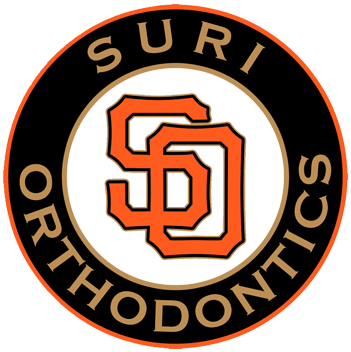Importance of Retainers
Wearing retainers is one of the most important phases of your orthodontic treatment. Together we have worked hard to get your teeth into their best possible position. However, when braces are removed, the teeth have a tendency to want to return to their original positions. To prevent this from happening and to allow the teeth to adapt to their new positions, retainers must be worn faithfully.
In most cases the retainers will need to be worn only at night. The length of time varies with each patient and depends on the relationship of your teeth. When the retainers are removed in the morning, please brush them carefully with your toothbrush, toothpaste or soap as directed to remove all the plaque. If plaque deposits build up on your retainer, Efferdent makes a retainer cleaner which is available at most stores. During the day please put the retainers in the case provided (there is no need to keep them moist). If you have a dog, take every precaution to keep the retainers away from the dog even when they are in their case. Dogs love the smell and will seek them out and chew them to pieces. Please do not put the retainers or retainer case in direct sunlight or in boiling water to clean them.
If these retainers are damaged or lost, there is an additional charge to replace them. If your retainers do not fit correctly or you are unable to wear them, please call the office immediately. Not wearing a retainer even for a short period of time may require a new retainer or possibly rebanding of the teeth at an additional cost. You can put a few drops of fluoride gel in the retainer once a week, and leave it there while you wear it overnight. It will help prevent decay.
The short appointments needed to check your retainers and your teeth in the future are important. Please bring your retainers to all of these appointments. Following treatment you may have an x-ray done to evaluate your treatment as well as the status of your wisdom teeth. These x-rays can be sent to your dentist, who we would like you to see as soon as possible for a post-treatment check-up.
The goal of your orthodontic treatment has been to accomplish the greatest possible improvement to your teeth permitted by your heredity and dental environment. There is no such thing as a perfect set of teeth. Minor tooth movement occurs in every mouth throughout life, whether or not there has been prior orthodontic treatment. The most common area for change is in the lower front teeth. These changes are normal and may be greatly minimized or possibly eliminated by continued retainer wear on a long term basis.
Kinds of Retainers
Traditional removable retainers are made with colored acrylic and wire. You can choose from several colors.
Clear overlay retainers are small and easy to wear. They also protect the surfaces of your teeth if you have a grinding or clenching habit.
A fixed retainer is a small wire bonded (glued) to the tongue side of your lower front six teeth.
Retention Phase
The Retention Phase, one of the most challenging aspects of orthodontics is to keep the teeth in place once the braces have been removed. Traditionally, retainers have been used to accomplish this, with the possibility that retainer wear could be eliminated after a couple of years when the teeth became stable. In the early 1900’s all orthodontic treatment was accomplished without removing teeth. When it was demonstrated in the mid 1900’s that this non-extraction approach resulted in teeth moving later in life (relapse), the majority of orthodontic treatment involved the removal of permanent teeth, hoping to minimize this relapse tendency. Recent studies now show that significant orthodontic relapse also occurs in extraction cases as well. Since relapse potential seems similar with both approaches and full wide smiles are judged more esthetically pleasing by many people, we do everything possible not to remove teeth.
The recent relapse studies show that twenty to thirty years after treatment, over half of the orthodontic patients experience significant tooth movement. The main problem is that it is not possible to predict which half will have this tooth movement. For this reason we are recommending that retainers be worn full time for at least one to two years after the braces are removed, and then to a lesser degree indefinitely (forever) while sleeping. For some this might be three to four times a week and for others it might be once per month to check to see if any tooth movement has occurred.
Your retention fee includes the initial set of retainers and all follow up for at least one year. After this time patients with retainers should call us if their retainers need adjustment. If the retainers become lost, broken or do not fit properly, we urge you to come into the office as soon as possible. Any additional services will be subject to our current fees at that time.
